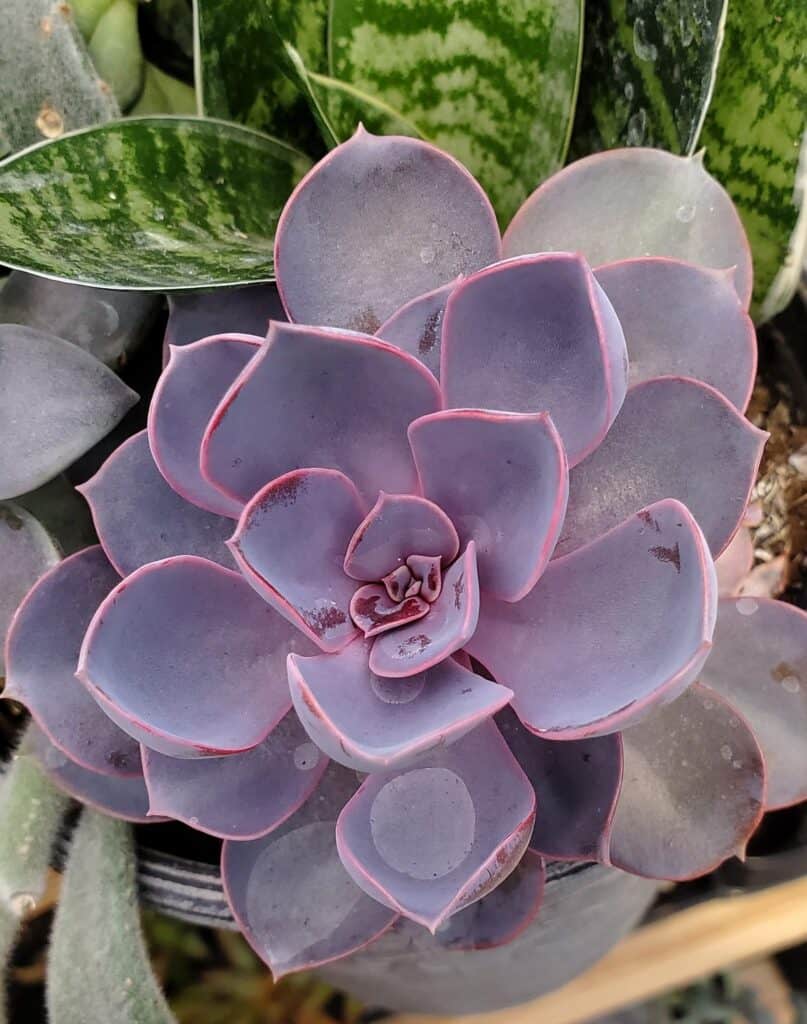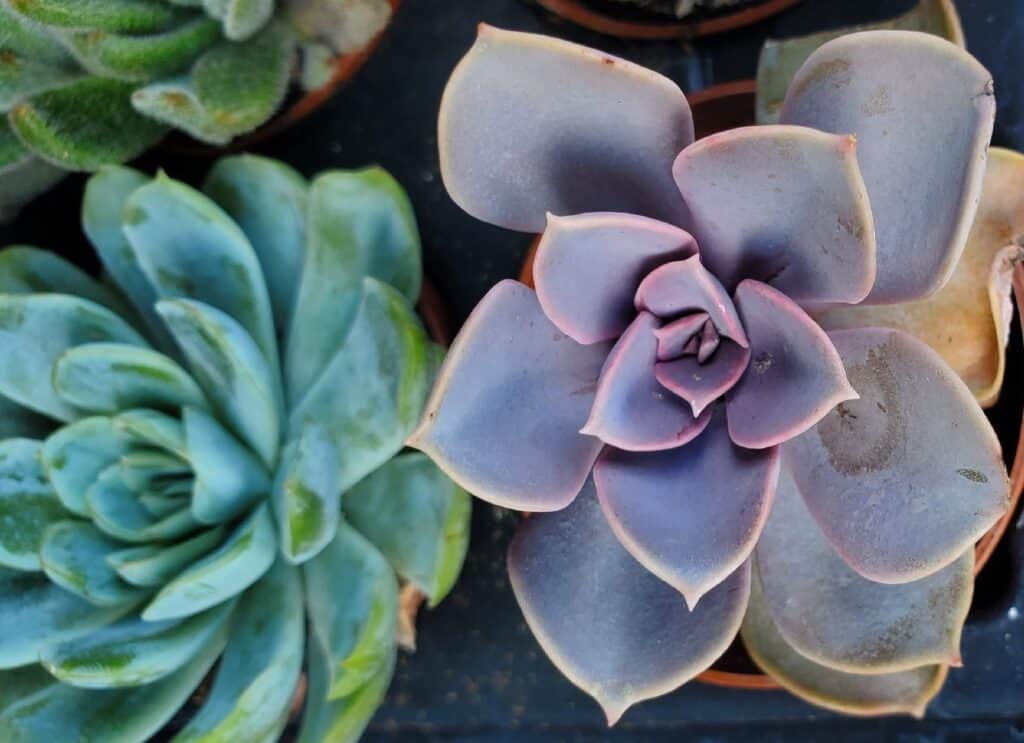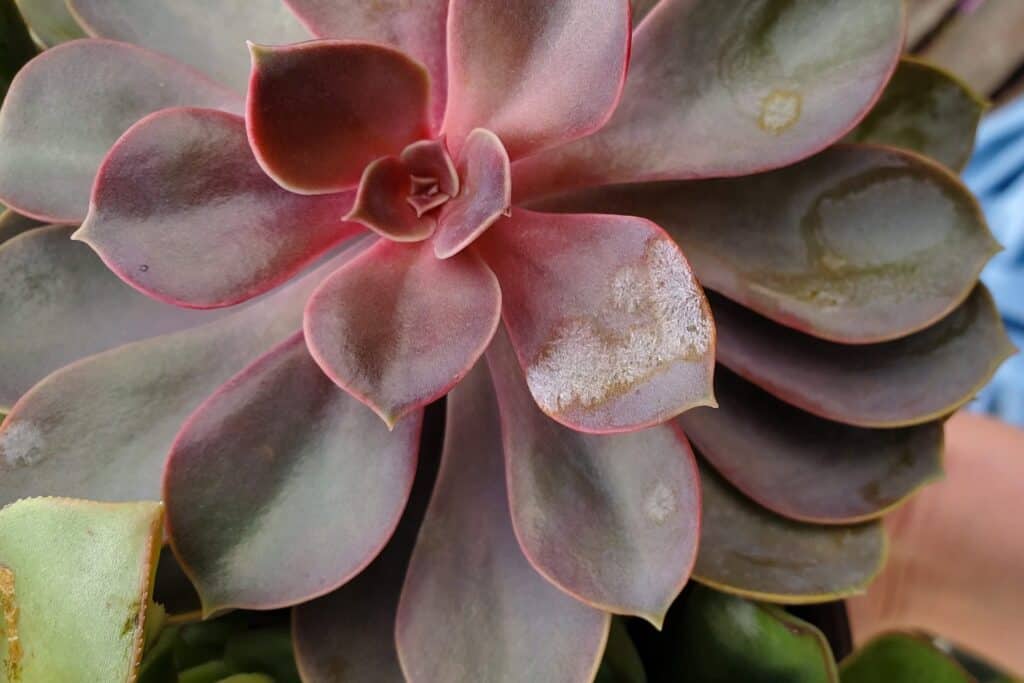Echeveria ‘Perle von Nurnberg’ – Info & Complete Care Guide
I absolutely love shopping online for succulents and gardening supplies. If you aren't already saving money by comparing prices online, give it a try! Here are six of my favorite things that I have purchased online as I build my own succulent oasis:
Spring is around the corner in my neck of the woods, and I was looking for succulents to fill in my container garden. With so many different types of succulents, it can be hard to know where to start.
The Echeveria ‘Perle von Nurnberg’ succulent is well-stocked in most of my local garden centers and it’s popular for a reason! It jumped right out at me because of its whimsical nature and stunning two-toned color when exposed to proper sunlight. It was an easy “yes!” for me.
I didn’t know much about this succulent though, so when I brought it home, I immediately did some research on how to care for this succulent in my home.
While most succulents require similar care, it’s necessary to understand the nuances of each individual plant in order to provide them with an optimal environment. In this article, I’ll give you information on how to care for your Echeveria ‘Perle von Nurnberg’ so that you can help it reach its full potential.
Scientific Name
Echeveria ‘Perle von Nurnberg’
Common Name
Pearl of Nurnberg
Physical Description of Echeveria ‘Perle von Nurnberg’

With its curved, paddle-shaped, red tips and wavy margins, the Echeveria ‘Perle von Nurnberg’ looks like a piece of art. Its colors range from grey to deep purple depending on the amount of sunlight it receives. Its rosette shape and small size makes it a great filler succulent.
With plenty of sunlight and great drainage, the Pearl of Nurnberg can reach up to six inches wide and three to four inches tall. Its leaves are coated with farina, acting as a natural sunscreen and raincoat to protect the plant from the elements.
When exposed to full sun, the ‘Pearl von Nurnberg’ takes on a pinkish tinge. During the summertime, this succulent should produce thin stalks topped with clusters of delicate, pink flowers with yellow centers.
Growing Season of Echeveria ‘Perle von Nurnberg’
Echeveria ‘Perle von Nurnberg’ does best in the warmer seasons of late spring through early fall. During this time it is actively growing.
Although this succulent is considered hardier than most succulents and can tolerate mild frosts, I recommend bringing it indoors if you live in an area that experiences harsh winters.
How to Care for Echeveria ‘Perle von Nurnberg’

Echeveria ‘Perle von Nurnberg’ needs certain conditions to remain healthy and thrive in your home. Here are some of my tips for providing the best care for this succulent.
Watering Needs of Echeveria ‘Perle von Nurnberg’
Echeveria ‘Perle von Nurnberg’ does not have very high watering needs and is known to be mildly drought tolerant. It enjoys more water when it is in its growth season during the summer, but the best practice is to allow the soil to dry out completely between waterings.
During the dormant season, water sparingly, as this succulent is more prone to root rot if overwatered. If you are uncertain about when to water, stick your finger into the soil and feel it. When the soil is dry down to your first knuckle, that’s usually an indication that it is time to water again.
Sunlight Needs of Echeveria ‘Perle von Nurnberg’
Echeveria ‘Perle von Nurnberg’ has moderate light needs. It can handle partial shade to full sun, but it will grow best with at least six hours of direct sunlight per day. This succulent prefers bright light, especially during its growth season in late spring through early fall.
If kept indoors, it should be placed on a sunny windowsill or under grow lights. With the right amount of light, the Pearl of Nurnberg will produce its best color and growth.
Soil Needs of Echeveria ‘Perle von Nurnberg’
Like other succulents, the Echeveria ‘Perle von Nurnberg’ enjoys loose, well-draining porous soil. You can use a commercial cactus soil mix or choose to create your own succulent mix. To make your own, combine three parts of potting soil, two parts coarse sand, and one part perlite or pumice to ensure good drainage.
Adding lava rocks to your soil can also help increase drainage. Repot your succulent every couple of years to avoid compacted soil. Be sure to use a pot with at least one drainage hole, as this succulent is sensitive to wet roots due to its low-water needs.
Related: Stunning Black Succulents to Spruce Up Any Space
Propagation Methods of Echeveria ‘Perle von Nurnberg’
The Pearl of Nurnberg is easy to propagate and can be done using either leaf extraction, stem cuttings, or offsets.
To use leaf cuttings, gently twist the leaves away from the stem rather than cutting them off. Allow the leaves to dry out a few days and callous over before placing them on top of well-draining soil. Water the soil whenever it dries out.
Stem cuttings should be taken from healthy stems, ideally with some leaves still attached. Just like the leaves, allow the stem to callous over before placing it into soil.
This plant might also produce offsets in spring which can be propagated by gently cutting them and allowing the cut to dry out before planting in fresh soil.
With proper care, you can easily propagate more of these beautiful succulents to add beauty and texture to your garden.
Troubleshooting Echeveria ‘Perle von Nurnberg’
Echeveria ‘Perle von Nurnberg’ can experience a few issues if not properly cared for. Here are some tips on how to troubleshoot the health of your succulent:
If the leaves start turning yellow, brown, or mushy and the soil is very damp, it could be a sign of overwatering. Allow the soil to dry out before watering again, and adjust your watering schedule accordingly.
When I first started caring for my Echeveria ‘Perle von Nurnberg,’ I realized it was sensitive to water splashing on its leaves. If this happens, the plant is prone to growing a white mold, which can cause it to decline in health quickly. The best thing you can do is to remove the infected leaves and ensure that nearby plants are not also covered in mold, as it can easily spread between them.

If the leaves appear pale or lack color, it could be a sign of not enough sunlight. Move the plant closer to a window or move it outdoors for more sun exposure for several hours per day.
Mealybugs can also cause damage to your succulent. These pests are most commonly found near the leaf joints or in the crevices of stems and leaves. If you spot these pests, use a cotton swab soaked in rubbing alcohol to gently remove them from the plant.
By keeping an eye out for signs of problems and taking action as soon as possible, your Echeveria ‘Perle von Nurnberg’ can thrive in any environment!
Related: Succulent Sunburn: How to Treat, Heal, and Avoid Sun Damage
Echeveria ‘Perle von Nurnberg’ in Review
Echeveria ‘Perle von Nurnberg’ is a beautiful and easy-to-care-for succulent that will bring life to any environment. With the right amount of sun, soil, and water, your succulent can happily thrive indoors or outdoors. Keep an eye out for pests like mealybugs, and don’t forget to remove dead leaves to keep pests away.
If you’re looking to add some greenery and life to your home, the Echeveria ‘Perle von Nurnberg’ is a great option. This succulent thrives in bright light, making it perfect for several areas in your home.
Not only will adding this beautiful succulent to your home bring life and texture to your decor, but it’s also easy to propagate. This means you can easily create more plants to place in other areas of your home, such as on a bookshelf, side table, or even in a dull bathroom.
With a few simple steps, you can ensure that your succulent will be healthy and vibrant for years to come. So go ahead and give this stunning succulent a try – I know you’ll love it!
Related: How to Start a Greenhouse for Succulents (Indoors or Out!)
